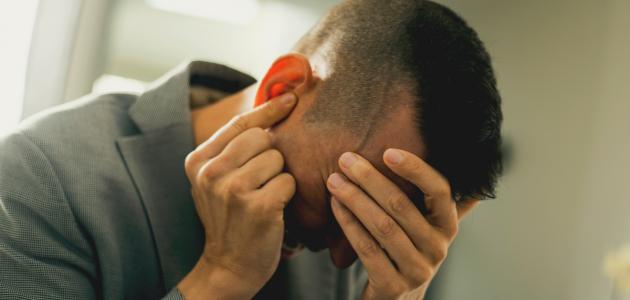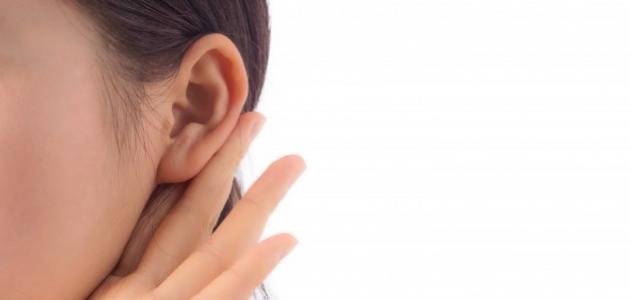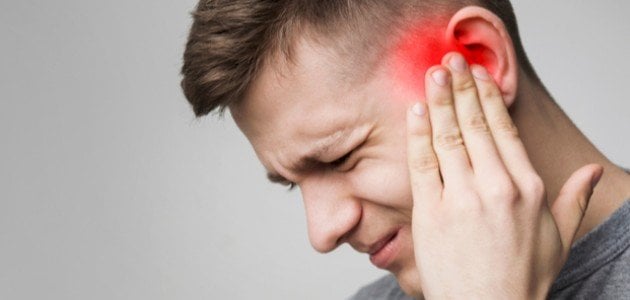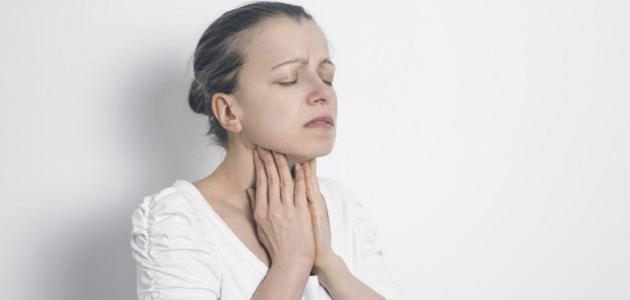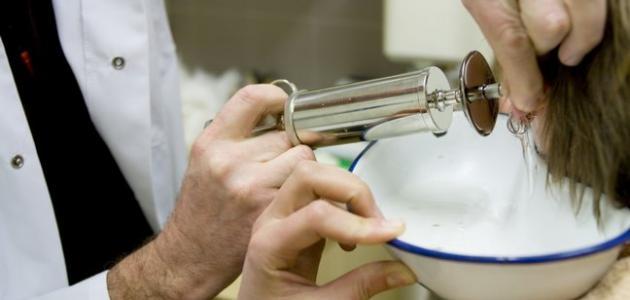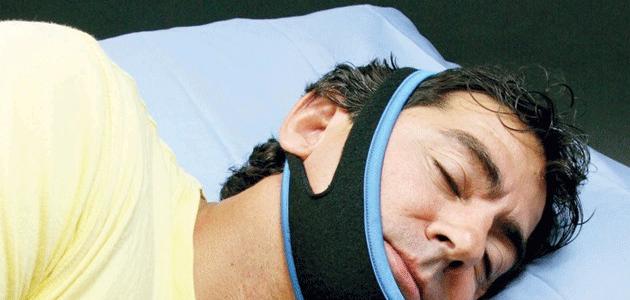How do I know if my eardrum is perforated?
Ruptured or Perforated Eardrum is known as a rupture of the thin tympanic membrane perforation between the ear canal and the middle ear. Perforated eardrum by knowing the symptoms and its diagnosis mechanism as shown below.
Symptoms of perforated eardrum
Some people may not feel any symptoms that indicate a perforated eardrum, and some may feel general discomfort in the ear. On the other hand, some people may have symptoms related to the cause of the perforated eardrum, which is often an infection. In general, the symptoms resulting from a perforated eardrum The eardrum disappears as soon as this hole heals and the infection, if any, is treated. The most prominent symptoms of a perforated eardrum can be summarized as follows:
- Severe ear pain, which is the most common symptom associated with a perforated eardrum, and it should be noted that the severity of this pain may vary from time to time. Sometimes the affected person may feel suddenly sharp and severe pain, sometimes he may only feel discomfort, and at other times the pain may suddenly ease. It should be made clear here that a middle ear infection may cause pain as a result of the pressure of the resulting pus on the eardrum, and in If this pain suddenly gets worse, this may indicate that the infection has led to a perforation in the ear, but the severity of this pain soon decreases. Once the hole occurs, the pus behind the eardrum comes out through this hole, reducing the resulting pressure and thus reducing the pain.
- Feeling itchy inside the ear.
- Clear, bloody, or pus discharge from the ear.
- Tinnitus.
- Complete or partial hearing loss in the affected ear.
- Suffering from various ear infections.
- Feeling dizzy or dizzy.
Read also:What are the causes of blood coming from the nose?
Diagnosis of eardrum perforation
The ear, nose and throat specialist usually resorts to visually examining the eardrum using light-based devices, the most famous of which are: otoscope and otomicroscope, to diagnose a perforated eardrum. He may also request that some tests be performed. Laboratory or tests to detect the presence of a perforation in the eardrum, determine the cause of the perforation, or evaluate the affected person’s sense of hearing if there are signs associated with a disturbance or loss in the sense of hearing. Below is a statement of the most prominent tests used for this, with some detail:
- Otoscope: To perform this examination, the funnel of the endoscope - which is the front part of the endoscope - is slowly inserted into the ear to examine the auditory canal through the light rays emanating from it. Where the doctor pulls the auricle up and back if the injured person is an adult, and down and backward if the injured person is a child, and the doctor can use his little finger as a fixing point for the device. To prevent any damage to the injured person’s ear if he moves suddenly during the examination, and then moves the speculum at different angles; To see the auditory canal and the tympanic membrane and examine them and ensure their safety. In a normal situation, the tympanic membrane should be gray-pink in color, transparent, not swollen or contracted, and move when air is blown into it. In this context, it is noteworthy that the characteristic of movement can be evaluated through the use of an otoscope. Pneumatic-otoscope equipped with a rubber air pump, through which air pressure can be created on the tympanic membrane. If the membrane moves, this means that it is healthy. It must be mentioned that it is normal for the presence of hair and glue (in English: Cerumen) of a yellow color. Or brown inside the auditory canal.
- Ear microscope: An ear microscope provides the doctor with a better view of the auditory canal and tympanic membrane than an otoscope; Because it provides better illumination and magnification of the ear parts, it is worth noting that the examination using an ear microscope is usually performed by the doctor and the injured person while they are awake, and he can also perform appropriate therapeutic interventions during this examination. This is because he does not need to hold the device in his hands.
- Other diagnostic procedures: Which includes the following:
- Laboratory tests: The doctor may request laboratory tests or a culture test in the event of discharge from the ear. This is to check the presence of a bacterial infection in the ear in some cases.
- Tympanometry: where the doctor inserts a specialized device into the auditory canal to measure the response of the eardrum to small changes in air pressure, and based on that it is possible to determine whether there is a hole in the ear or not.
- Hearing test: (in English: Audiology exam), which is a set of tests conducted in a soundproof room. These tests aim to measure the ability to hear using sounds of different strength and intensity.
- Tuning fork examination: (in English: Tuning fork evaluation), which is a simple examination conducted using a two-pronged metal tool that emits a sound when struck. This examination aims to evaluate the affected person’s sense of hearing, and also contributes to revealing the cause of hearing loss, whether the cause is damage. In vibrating parts of the middle ear, including the eardrum, or damage to the nerves and sensors in the inner ear, or damage to both.
Read also:Ear infection in children
doctor review
A person with a piercing in the ear is advised to see a doctor in the following cases:
Read also:Treating ear blockage due to a cold- Any symptom associated with a piercing in the ear persists for more than two months, despite receiving appropriate treatment.
- Having a fever.
- Hearing loss gets worse.
- Hearing a loud ringing in the ear.
- Feeling severe pain in the ear or getting worse.
- vomiting;
- Feeling severe dizziness or getting worse.
- The presence of a foreign body in the ear.
- Cases that require immediate medical intervention:
- Bleeding in the ear.
- Inability to feel or move any part of the face.
